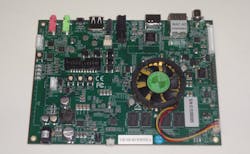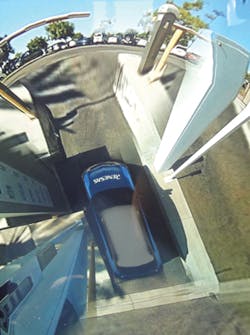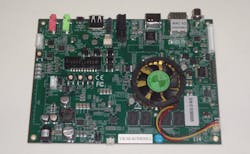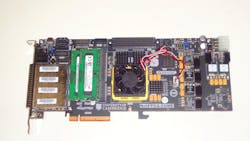Electronic systems continue to get more complex—making the job of developers more difficult—but new development kits and software can help. At one end of the spectrum is the tiny, $5 Raspberry Pi Zero while at the other end are platforms like Renesas' R-Car (Fig. 1) and Digilent’s NetFPGA SUME (Fig. 2). These two highlight why the price and size of a development platform are not always small.
The R-Car series system-on-chip (SoC) incorporates the IMP image recognition hardware core designed to offload the multiple Cortex-A15 cores. The R-Car can address a range of automotive applications from Advanced Driver Assistance Systems (ADASs) to knitting together streams from four cameras to provide the user with a 360-deg. view of the surrounding area.
Digilent’s NetFPGA SUME is the top-end board in the NetFPGA family that is an open-source hardware and software platform that is supported by a number of vendors and educational institutions like Stanford University and the University of Cambridge. The SUME is built around Xilinx’s Virtex 7 FPGA. It also has four SFP+ interfaces that can handle 10 Gbit/s transceivers along with a VITA-57 HPC FMC connector with 10 RocketIO transceivers and a QTH connector. The board can plug into a PCI Express Gen 3 x8 connector or be used in a standalone configuration using external power. There are 8 Gbytes of DDR 3 memory on a pair of SODIMMs.
The NetFPGA SUME is supported by a large collection of free IP blocks on the NetFPGA.org site. The one catch is the 10 Gbit/s IP that comes from Xilinx. Xilinx’s Vivado FPGA design suite is the underlying development tool. The 100 Gbit/s platform can be used to experiment with new interconnect and high-bandwidth switching applications. For example, three boards could be connected together to provide a 300 Gbit/s non-blocking switch with three 100 Gbit/s bidirectional links.
The Renesas R-Car platform starts at $350 while the educational version of NetFPGA SUME is $4,995. These are not inexpensive, but they are actually a bargain considering the support they deliver.
Of course, developers on the cutting edge will turn to chip vendors and their partners to gain access to the latest technology like Xilinx’s 16-nm UltraScale+ FPGAs that incorporate features like UltraRAM that bring large amounts of storage onto the chip.
About the Author
William Wong Blog
Senior Content Director
Bill's latest articles are listed on this author page, William G. Wong.
Bill Wong covers Digital, Embedded, Systems and Software topics at Electronic Design. He writes a number of columns, including Lab Bench and alt.embedded, plus Bill's Workbench hands-on column. Bill is a Georgia Tech alumni with a B.S in Electrical Engineering and a master's degree in computer science for Rutgers, The State University of New Jersey.
He has written a dozen books and was the first Director of PC Labs at PC Magazine. He has worked in the computer and publication industry for almost 40 years and has been with Electronic Design since 2000. He helps run the Mercer Science and Engineering Fair in Mercer County, NJ.
- Check out more articles by Bill Wong on Electronic Design
- Bill Wong on Facebook
- @AltEmbedded on Twitter



